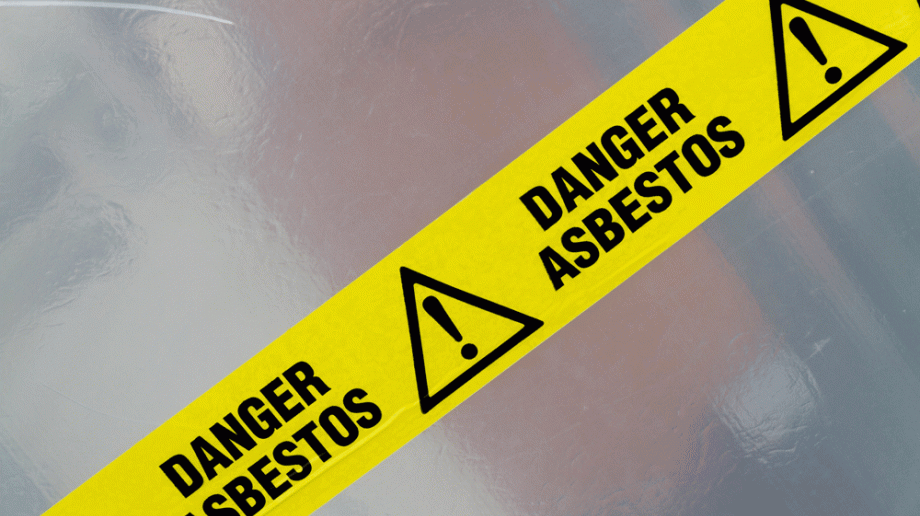
Managing asbestos
For local authorities, central government departments, housing associations and all those responsible for public buildings and housing stock, managing asbestos is not just a regulatory box to tick, it is a critical duty to protect health and lives says UKATA.
Asbestos has been banned in the UK since 1999, but it continues to pose a significant health threat in buildings constructed or refurbished before 2000. From schools and hospitals to social housing and office blocks, the legacy of asbestos is embedded in thousands of publicly managed buildings.
For duty holders in local authorities, government bodies and housing associations, the responsibility for managing asbestos is both a legal obligation and a moral one. Failure to properly identify and manage asbestos-containing materials (ACMs) can lead to fatal health consequences, legal enforcement action and lasting reputational damage.
With recent reminders from the Health and Safety Executive (HSE) about the need for robust asbestos controls across the public sector, now is the time for organisations to ensure their processes are not only compliant but aligned with best practice.
The legal landscape: control of asbestos regulations 2012
At the heart of asbestos regulation in the UK is the Control of Asbestos Regulations 2012 (CAR 2012). Under Regulation 4, known as the duty to manage, those responsible for the maintenance or repair of non-domestic premises are legally required to assess and manage the risk posed by asbestos.
Importantly, the definition of “non-domestic premises” includes the communal areas of residential buildings, such as stairwells, corridors, plant rooms and shared facilities in housing blocks. This means that housing associations, councils and government housing bodies fall squarely within the scope of CAR 2012.
The duty holder is typically the person or organisation with legal responsibility for property maintenance. This could be the landlord, housing provider, managing agent, or in some cases, even the tenant, depending on lease or tenancy agreements. However, the key point is that someone must be clearly designated as responsible.
Core responsibilities of the duty holder
The regulations place several specific duties on the identified duty holder. These include: identifying the presence of ACMs in premises; assessing the condition and risk associated with these materials; creating and implementing a written asbestos management plan; ensuring ongoing monitoring, maintenance and review of control measures; and providing information to anyone who may encounter asbestos, including staff, contractors and even tenants.
In practice, many organisations nominate an Appointed Person to support the duty holder. This individual is often responsible for operational aspects of asbestos management, keeping the asbestos register up to date, liaising with contractors and ensuring that policies are followed day-to-day.
However, legal responsibility cannot be delegated. Both the duty holder and the appointed person must be competent and properly trained to perform their roles, and ignorance of responsibilities is not a defence in the eyes of the law.
Training for compliance: the role of UKATA
Ensuring competency starts with high-quality training. The UK Asbestos Training Association (UKATA) is one of the leading organisations in this field, offering CPD-certified training E
F through rigorously audited training providers across the UK.
UKATA’s portfolio includes the following.
Duty Holder Course - for those with strategic responsibility for asbestos management across an organisation. This course focuses on legal compliance, understanding the risk landscape and embedding robust systems of control. Appointed Person Asbestos Training - targeted at those overseeing the implementation of asbestos policies. The course covers how to maintain asbestos records, coordinate surveys and remediation works and ensure contractors are fully briefed.
Duty to Manage Asbestos Training - a practical and accessible course for anyone assisting in the compliance of managing asbestos such as landlords, housing officers, property managers and maintenance teams. It provides an overview of essential legal knowledge and practical tools to manage asbestos effectively on the ground.
All training is delivered in line with current HSE guidance and ensures that attendees understand not only the letter of the law, but the practical realities of managing asbestos in complex public sector estates.
HSE Best Practice Guidance
The Health and Safety Executive remains the primary regulator for asbestos in the UK. Its guidance lays out a clear framework for organisations to follow, ensuring that asbestos is managed proactively and safely.
Key best practices include the following. First is commissioning professional asbestos surveys (management or refurbishment/demolition surveys) from competent surveyors (HSE strongly recommends using accredited asbestos surveying organisations). It is important to maintain and regularly update an asbestos register to track the condition and location of ACMs. Best practice also includes preparing and reviewing a written asbestos management plan detailing control measures, responsibilities and escalation procedures and providing clear information and instruction to anyone who may disturb asbestos materials during their work, this includes maintenance teams, external contractors and even emergency responders. It must be ensured that high-risk asbestos work is carried out by licensed contractors with the appropriate skills, equipment and HSE approval.
Public health and legal risks
The health risks associated with asbestos exposure are severe. Even brief or limited exposure to airborne asbestos fibres can lead to diseases such as: mesothelioma (a rare and aggressive cancer almost exclusively caused by asbestos); lung cancer; asbestosis (a chronic lung condition); and pleural thickening.
The long latency period of asbestos-related illnesses, often 15 to 60 years, means that exposure today could result in fatal illness decades into the future. For organisations managing social housing and public buildings, this represents a long-term liability, both legally and ethically.
The legal consequences of non-compliance can also be significant. Enforcement actions may include improvement notices, prohibition notices, or even prosecution under health and safety law. In recent years, several public sector organisations have faced fines and reputational damage due to inadequate asbestos controls.
A challenge and an opportunity
Managing asbestos in the public estate is undeniably challenging. Many local authorities and housing providers are grappling with ageing building stock, limited budgets and stretched facilities teams. But these challenges cannot excuse inaction.
Instead, this moment presents an opportunity: to modernise asbestos management processes, invest in training and make use of digital tools such as cloud-based asbestos registers and contractor compliance platforms.
Above all, organisations must foster a culture of proactive risk management, where asbestos is treated as a critical health and safety issue, not an inconvenient legacy of the past.
What local authorities and housing providers should do now
If your organisation is responsible for public housing or non-domestic buildings, the following actions are strongly recommended. Review your current asbestos management plan and ensure it aligns with CAR 2012; clarify who the duty holder and appointed person are within your structure; and undertake up-to-date training through a competent training provider. Audit your asbestos register and commission new surveys where needed; engage with tenants and contractors transparently, ensuring they are aware of potential risks and protections in place; and use digital tools to improve accuracy and accessibility of records.
Get trained – stay compliant
UKATA training is available throughout the UK via audited, professional providers. Whether you are a strategic leader, property manager, or maintenance officer, there is a course designed to equip you with the knowledge and skills required to manage asbestos legally and safely.
Conclusion
The presence of asbestos in the UK’s public building stock is not going away any time soon. But the risks it poses can be managed – if the right steps are taken. With strong leadership, robust training, and a commitment to compliance, local authorities and housing providers can meet their obligations under CAR 2012, protect their communities, and avoid the devastating consequences of asbestos mismanagement.
About UKATA
The UK Asbestos Training Association (UKATA) remains at the forefront of asbestos training, committed to raising awareness about the pervasive threat of asbestos and the critical importance of responsible management.
Explore our Training Provider Directory and more at www.ukata.org.uk.
Enquiries: info@ukata.org.uk


